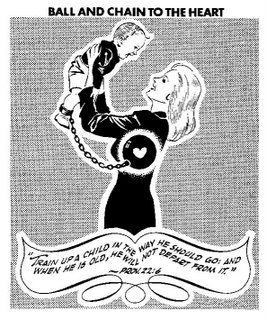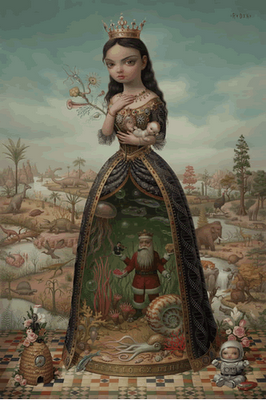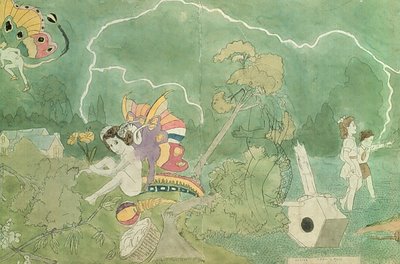Thursday, November 02, 2006
My Birthday Party
Όταν έκανα το πρώτο πάρτυ γενεθλίων -ήμουν επτά- προς μεγάλη μου απογοήτευση δεν ήρθε κανείς απο τους συμμαθητές μου να μου ευχηθεί, να πιεί πορτοκαλάδα να φάει κεικ.
Παρατηρώντας απο μακριά την παιδική μου ηλικία αυτό που διαπιστώνω είναι πόσο ευαίσθητη είnαι η ισορροπία ανάμεσα στην σκληρή ευτυχία του να ανακαλύπτεις τον κόσμο και την τεράστια, είναι η αλήθεια, αδικία της πρώτης απόρριψης.
Ναι, είναι σίγουρο οτι τότε σου δίνουν να καταλάβεις πως αν δεν συμμορφωθείς στις επιταγές ,όποιες κι αν είναι αυτές, του, όποιου κι αν είναι αυτό, συνόλου τα πράγματα δεν θα είναι εύκολα για σένα.
Μικρογραφία του κόσμου των μεγάλων, αυτός των μικρών, είναι εξίσου άγριος και αδίστακτος.
Ωστόσο το ίδιο άγρια και μεγαλειώδης είναι η χαρά που νιώθεις όταν η συλλογή χαρτοπετσέτας ή οι ζωγραφιές σου ή το σπαγγάτο σου γίνονται αποδεκτά με ενθουσιασμό.
Βλέπω την παιδική ηλικία σαν ένα γόνιμο, μυστηριώδες και ενδιαφέρον πεδίο που όταν το επισκέπτομαι και το ταλαιπωρώ μου δίνει νόστιμους χυμούς και δώρα. Η αλήθεια είναι πως οι ηρωίδες μου συνήθως δεν φαίνονται πολύ ενθουσιασμένες, αντιθέτως έχουν τάσεις αυτοκτονίας, μάχονται αόρατους εχθρούς και φαντάσματα, κάνουν εμετό στη θέα ειδυλλιακών ηλιοβασιλεμάτων, παρόλαυτα, όταν αποφασίσουν να περάσουν καλά, το κάνουν αψηφώντας οποιοnδήποτε κίνδυνο και με τεράστια επιτυχία.
THE FAVORITES
Henry Darger και μόνο
ειρήνη καραγιαννοπούλου
Παρατηρώντας απο μακριά την παιδική μου ηλικία αυτό που διαπιστώνω είναι πόσο ευαίσθητη είnαι η ισορροπία ανάμεσα στην σκληρή ευτυχία του να ανακαλύπτεις τον κόσμο και την τεράστια, είναι η αλήθεια, αδικία της πρώτης απόρριψης.
Ναι, είναι σίγουρο οτι τότε σου δίνουν να καταλάβεις πως αν δεν συμμορφωθείς στις επιταγές ,όποιες κι αν είναι αυτές, του, όποιου κι αν είναι αυτό, συνόλου τα πράγματα δεν θα είναι εύκολα για σένα.
Μικρογραφία του κόσμου των μεγάλων, αυτός των μικρών, είναι εξίσου άγριος και αδίστακτος.
Ωστόσο το ίδιο άγρια και μεγαλειώδης είναι η χαρά που νιώθεις όταν η συλλογή χαρτοπετσέτας ή οι ζωγραφιές σου ή το σπαγγάτο σου γίνονται αποδεκτά με ενθουσιασμό.
Βλέπω την παιδική ηλικία σαν ένα γόνιμο, μυστηριώδες και ενδιαφέρον πεδίο που όταν το επισκέπτομαι και το ταλαιπωρώ μου δίνει νόστιμους χυμούς και δώρα. Η αλήθεια είναι πως οι ηρωίδες μου συνήθως δεν φαίνονται πολύ ενθουσιασμένες, αντιθέτως έχουν τάσεις αυτοκτονίας, μάχονται αόρατους εχθρούς και φαντάσματα, κάνουν εμετό στη θέα ειδυλλιακών ηλιοβασιλεμάτων, παρόλαυτα, όταν αποφασίσουν να περάσουν καλά, το κάνουν αψηφώντας οποιοnδήποτε κίνδυνο και με τεράστια επιτυχία.
THE FAVORITES
Henry Darger και μόνο
ειρήνη καραγιαννοπούλου
Blown Into Bits
mesencephalic
Στην αρχή είχα στο μυαλό μου κάτι γενικό, παιδικότητα και εφηβεία. Ήθελα να φτιάξω κάτι που να έχει να κάνει με την ενηλικίωση, το πέρασμα από τον κόσμο των παιδιών στον κόσμο των μεγάλων. Είναι μια περίοδος που βρίσκεσαι σε μια κατάσταση που δε θες να είσαι πια παιδάκι, αλλά ούτε και σαν τους άλλους ενήλικους. Αλλάζεις συνεχώς, καταλαβαίνεις ότι μεγαλώνεις, έχεις δύναμη και ενέργεια, θες να πατάς στα πόδια σου, να ενταχθείς στο σύστημα, αλλά την άλλη στιγμή το σιχαίνεσαι. Ερωτεύεσαι, παίζεις, μαλώνεις, ακούς μουσική. Στη συνέχεια άρχισα να θυμάμαι κάποια πρόσωπα, καταστάσεις, γεγονότα και αντικείμενα, χαρακτηριστικά εκείνης της εποχής. Τελικά έφτιαξα μια αυτοπροσωπογραφία, που έχει τη λογική των σχεδίων ανατομίας και των ιατρικών φωτογραφικών αρχείων. Επίσης θα ήθελα να σου πω για τις πληγές-τραύματα: σίγουρα έχουν συμβολική σημασία, η οποία δεν έχει να κάνει με κάποια συγκεκριμένη τραυματική εμπειρία του παρελθόντος, αλλά σχετίζεται είτε με την έννοια τις απώλειας, είτε με την συναισθηματική ένταση που βιώνει κάποιος μια κατάσταση γενικότερα.

Ίσως να μην πρόκειται για κάποιο ατύχημα ή για κάποιου είδους μετάλλαξη που έχει αλλοιώσει ένα μέρος του προσώπου και των χαρακτηριστικών του ήρωα. Ο τίτλος του, mesencephalic, μας προσκαλεί να μπούμε στο εσωτερικό του μυαλού και προέρχεται από την ελληνική λέξη μεσεγκέφαλος, το τμήμα του εγκεφάλου που βρίσκεται στο κέντρο του, ανάμεσα στα ημισφαίρια. Μια σκέψη μπορεί να είναι τόσο δυνατή και βίαιη που να αφήνει ουλές. Ο συσχετισμός με την παιδικότητα ή την εφηβεία γίνεται όταν συνειδητοποιήσουμε πως ένα κομμάτι του ήρωα έχει αποκολληθεί βίαια από τον ίδιο, όπως έγινε και η μετάβαση από την παιδική ηλικία στην ωριμότητα.
THE FAVORITES
Jake και Dinos Chapman, tragic anatomies.
Οι εικονογραφίσεις για παραμύθια του Goustave Dore.
Το κομικ του Charles Burns, Black Hole.
Οι Trevor Brown, Gottfried Helnwein, Mark Ryden, Takashi Murakami, Patricia
Piccinini και Mike Kelley.
Οι ταινίες των Tim Burton, Terry Guilliam, Jan Svankmajer και ο Bob ο σφουγγαράκης.
Τα δοκίμια για την παιδικότητα και τα παιχνίδια των Charles Baudelaire, Chesterton και
Benjamin, από το βιβλίο Κούκλες και Παιχνίδια.
γιώργος τούρλας

Ίσως να μην πρόκειται για κάποιο ατύχημα ή για κάποιου είδους μετάλλαξη που έχει αλλοιώσει ένα μέρος του προσώπου και των χαρακτηριστικών του ήρωα. Ο τίτλος του, mesencephalic, μας προσκαλεί να μπούμε στο εσωτερικό του μυαλού και προέρχεται από την ελληνική λέξη μεσεγκέφαλος, το τμήμα του εγκεφάλου που βρίσκεται στο κέντρο του, ανάμεσα στα ημισφαίρια. Μια σκέψη μπορεί να είναι τόσο δυνατή και βίαιη που να αφήνει ουλές. Ο συσχετισμός με την παιδικότητα ή την εφηβεία γίνεται όταν συνειδητοποιήσουμε πως ένα κομμάτι του ήρωα έχει αποκολληθεί βίαια από τον ίδιο, όπως έγινε και η μετάβαση από την παιδική ηλικία στην ωριμότητα.
THE FAVORITES
Jake και Dinos Chapman, tragic anatomies.
Οι εικονογραφίσεις για παραμύθια του Goustave Dore.
Το κομικ του Charles Burns, Black Hole.
Οι Trevor Brown, Gottfried Helnwein, Mark Ryden, Takashi Murakami, Patricia
Piccinini και Mike Kelley.
Οι ταινίες των Tim Burton, Terry Guilliam, Jan Svankmajer και ο Bob ο σφουγγαράκης.
Τα δοκίμια για την παιδικότητα και τα παιχνίδια των Charles Baudelaire, Chesterton και
Benjamin, από το βιβλίο Κούκλες και Παιχνίδια.
γιώργος τούρλας
The Top Fives
TOP 5 ΤΑΙΝΙΕΣ
1. kids : Larry Clark
2. Edward scissorhands : Tim Burton
3. Niceland : Fiorik Friedriksson
4. Alice : Jan Svankmayer
5. May : Lucky Mc Kee
TOP 5 SONGS
1. trust: the Cure
2. mother : Siouxie and the banshees
3. Ροζα Ροζαλία Λιλιπούπολη
4. all the pretty horses : Current 93
5. I’m ugly and I don\t know why : butt trumpet
κωνσταντίνα βούλγαρη
1. kids : Larry Clark
2. Edward scissorhands : Tim Burton
3. Niceland : Fiorik Friedriksson
4. Alice : Jan Svankmayer
5. May : Lucky Mc Kee
TOP 5 SONGS
1. trust: the Cure
2. mother : Siouxie and the banshees
3. Ροζα Ροζαλία Λιλιπούπολη
4. all the pretty horses : Current 93
5. I’m ugly and I don\t know why : butt trumpet
κωνσταντίνα βούλγαρη
metamorphosis
Η ηλικία της μεταμόρφωσης. Η τελευταία μας στιγμή πριν γίνουμε ενήλικες και καλουπωθούμε. Η τελευταία στιγμή όπου όλα μπορούσαν να συμβούν όπου εμείς μπορούσαμε να γίνουμε τα πάντα, από θαλασσοπόροι εξερευνητές στα βάθη της Πολυνησίας εως ναρκομανείς ροκ σταρ εως και σούπερ ήρωες ή πλάσματα της φαντασίας.
Προσωπικά εκεί θέλω να βρίσκομαι! Αν και η ανασφάλεια και το λαχάνιασμα της εποχής δύσκολα επιστρέφει κι ήταν όντως εφιαλτικό όσο δεν ήξερες καθόλου ποιός είσαι
βαρδής μαρινάκης
Προσωπικά εκεί θέλω να βρίσκομαι! Αν και η ανασφάλεια και το λαχάνιασμα της εποχής δύσκολα επιστρέφει κι ήταν όντως εφιαλτικό όσο δεν ήξερες καθόλου ποιός είσαι
βαρδής μαρινάκης
Odd Girls Out and The Loveshies
Στην έκθεση Turning Twelve εξετάζεται η αθωότητα στην ανυποψίαστη παιδική ηλικία, η διαδικασία ωρίμανσης, η διαμόρφωση του ανθρώπινου ψυχισμού, το πέρασμα μέσα από την εφηβεία στην ωρίμανση και στον κόσμο των ενηλίκων.
Παιδικοί έρωτες αλλά και εφηβική εγκληματικότητα, εμμονές, ιδεοληψίες αλλά και επαναστατικότητα, ημερολόγια με τρυφερά ποιήματα αλλά και runaways, αποκάλυψη της σεξουαλικότητας αλλά και απόπειρες αυτοκτονίας.
Εικόνες και αναφορές για την παιδικότητα που υπάρχει στην ψυχισμό κάθε ενήλικα και στην εφηβεία που ίσως διαρκεί αιώνια. Ένα κρυφό πέρασμα ανάμεσα στον κόσμο των παιδιών και τον κόσμο των ενηλίκων.
Παραμύθια, παιχνίδια, περιέργεια, πρώτος έρωτας, μυθοποιημένα είδωλα, επαναστάσεις.
Μια ρευστή συναισθηματική κατάσταση.
**********************************************
Ενώ στο πρώτο μέρος, το My Mellow Life, οι καλλιτέχνες ανακάλυπταν την χαμένη παιδικότητά τους μέσα από σύμβολα και κώδικες ακόμη και αντικείμενα φετίχ -προσωπικά και πολλές φορές αυτοαναφορικά - στο Odd Girls Out and the Loveshies επιστρέφουν στο αρχέτυπο του παιδιού, η παιδικότητα παίρνει τη μορφή αρχετυπικών εικόνων στις οποίες ελλοχεύει η ηδονιστική ματιά.
Για την Κωσταντίνα Βούλγαρη η ανάμνηση παίρνει τη μορφή ενός εφηβικού ημερολογίου γεμάτο με προσωπικές ιστορίες και ποιήματα που μεταδίδουν έναν ξέφρενο ουτοπικό ενθουσιασμό αλλά και τα τραύματα ερωτικών απογοητεύσεων και χαμένων παιδικών φαντασιώσεων. Oι μικρές ηρωίδες στα σχέδια της Ειρήνης Καραγιαννοπούλου μοιάζουν σαν εγκλωβισμένες μέσα στον παραμυθένιο κόσμο τους, μάχονται αόρατους ήρωες και φαντάσματα και κάνουν εμετό θέλοντας να πετάξουν από πάνω τους κάθε τι όμορφο και αθώο. Ο Γιώργος Τούρλας φτιάχνει έναν βίαιο παιδικό ήρωα ορίζοντας τη μετάβαση από την παιδικότητα στην ενηλικίωση ως μία απρόσμενη αποκόλληση που προκύπτει στο ίδιο το σώμα. Το σώμα γίνεται ένας ολόκληρος κόσμος που μεταμορφώνει βιωματικά γεγονότα και αντικείμενα, ο οποίος όμως δεν μπορεί να αποβάλλει τις πληγές- τραύματα που σχετίζονται είτε με την έννοια της απώλειας ή με την συναισθηματική κατάσταση που βιώνει. Το «παιδί» του Παναγιώτη Λουκά προβάλλεται το αρχέτυπο του τραυματισμένου παιδιού/εφήβου, ο οποίος μη θέλοντας να μεγαλώσει ποτέ μεταμορφώθηκε σε ξωτικό.
Η Τερέζα Παπαμιχάλη αφηγείται από βιβλία ποιήματα και από τραγούδια έναν bizarre παιδικό κόσμο όπου το σκοτεινό ενυπάρχει κάτω από το «ροζ». Και στο απόσπασμα ταινία μικρού μήκους του Βαρδή Μαρινάκη το αγγελικό θηλυκό πλάσμα παρουσιάζεται ως τρωτό, ευαίσθητο και αγαπημένο, η προβολή του ενήλικα όμως πάνω σε αυτό το μεταβάλλει σε επιθυμητό και τελικά μυστήριο.
Thursday, October 26, 2006
diamonds are forever
Το στάδιο της παιδικότητας και η εφηβεία είναι μεταβατικές περίοδοι που καθορίζουν τη ζωή του ενήλικα. Γι’ αυτό όλοι σχεδόν οι καλλιτέχνες σε όλες τις εποχές έχουν ασχοληθεί με το θέμα της ενηλικίωσης. Προσωπικά με ενδιαφέρει αυτό το πέρασμα από την παιδικότητα στην εφηβεία γιατί σηματοδοτεί την πρώτη ρήξη με τον εαυτό μας, και έτσι τη δημιουργία της ταυτότητάς μας. Είναι ένα στάδιο εσωτερικών συγκρούσεων που μας σημαδεύουν για όλη μας τη ζωή.
Η δουλειά μου (είναι αναπόφευκτο) έχει πάντα στοιχεία που αφορούν σε αυτά. Το θέμα πάντως σε αυτή την περίπτωση το είδα από την πλευρά μιας 27χρονης και όχι προσπαθώντας να σκεφτώ ως παιδί ή ως έφηβη.
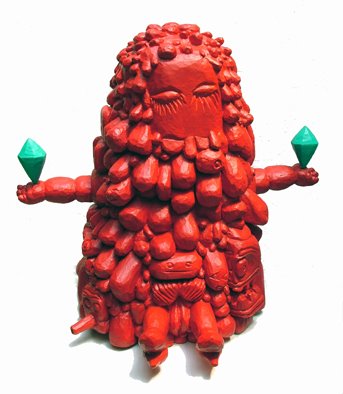
Από ταινίες αυτή που εξετάζει σε βάθος και χωρίς αναστολές τον κόσμο της παιδικής ηλικίας είναι το “Tideland” και ο “Βαρώνος Μιγχάουζεν” του Terry Gilliam, αλλά και το “Akira” του Katsuhiro Otomo (γιαπωνέζικο manga). Επίσης οι ταινίες του Jan Svankmayer.
Τα εικαστικά έργα που έχουν εύστοχα σχόλια για το θέμα είναι : τα βίντεο και τα γλυπτά του Paul McCarthy, τα κουκλάκια του Mike Kelley και του Tony Oursler,
τα γλυπτά του Takashi Murakami, της Niki de sant Phalle και της Patricia Piccinini,
όπως και τα χαρακτικά (και τα γλυπτά) των αδερφών Chapman, και οι ζωγραφιές του Yoshitomo Nara.
Από βιβλία εκτός από τα κείμενα του Lacan, του Froyd και του Jung (που δεν είναι λογοτεχνία), τα παραμύθια του Αισώπου και των αδερφών Γκριμ είναι αυτά που σκέφτομαι μόλις ακούω παιδική ηλικία. Πάντως το αγαπημένο μου βιβλίο όταν ήμουν μικρή ήταν “Ο μικρός βρικόλακας” (μια σειρά βιβλίων με ένα παιδί που κάνει παρέα με ένα βρικόλακα), και το αγαπημένο μου παραμύθι “H ωραία κοιμωμένη”.
σταυρούλα παπαδάκη
Η δουλειά μου (είναι αναπόφευκτο) έχει πάντα στοιχεία που αφορούν σε αυτά. Το θέμα πάντως σε αυτή την περίπτωση το είδα από την πλευρά μιας 27χρονης και όχι προσπαθώντας να σκεφτώ ως παιδί ή ως έφηβη.

Από ταινίες αυτή που εξετάζει σε βάθος και χωρίς αναστολές τον κόσμο της παιδικής ηλικίας είναι το “Tideland” και ο “Βαρώνος Μιγχάουζεν” του Terry Gilliam, αλλά και το “Akira” του Katsuhiro Otomo (γιαπωνέζικο manga). Επίσης οι ταινίες του Jan Svankmayer.
Τα εικαστικά έργα που έχουν εύστοχα σχόλια για το θέμα είναι : τα βίντεο και τα γλυπτά του Paul McCarthy, τα κουκλάκια του Mike Kelley και του Tony Oursler,
τα γλυπτά του Takashi Murakami, της Niki de sant Phalle και της Patricia Piccinini,
όπως και τα χαρακτικά (και τα γλυπτά) των αδερφών Chapman, και οι ζωγραφιές του Yoshitomo Nara.
Από βιβλία εκτός από τα κείμενα του Lacan, του Froyd και του Jung (που δεν είναι λογοτεχνία), τα παραμύθια του Αισώπου και των αδερφών Γκριμ είναι αυτά που σκέφτομαι μόλις ακούω παιδική ηλικία. Πάντως το αγαπημένο μου βιβλίο όταν ήμουν μικρή ήταν “Ο μικρός βρικόλακας” (μια σειρά βιβλίων με ένα παιδί που κάνει παρέα με ένα βρικόλακα), και το αγαπημένο μου παραμύθι “H ωραία κοιμωμένη”.
σταυρούλα παπαδάκη
days to come
Pink - μασημενο ροζ
My Mellow Life
Στην έκθεση Turning Twelve εξετάζεται η αθωότητα στην ανυποψίαστη παιδική ηλικία, η διαδικασία ωρίμανσης, η διαμόρφωση του ανθρώπινου ψυχισμού, το πέρασμα μέσα από την εφηβεία στην ωρίμανση και στον κόσμο των ενηλίκων.
Παιδικοί έρωτες αλλά και εφηβική εγκληματικότητα, εμμονές, ιδεοληψίες αλλά και επαναστατικότητα, ημερολόγια με τρυφερά ποιήματα αλλά και runaways, αποκάλυψη της σεξουαλικότητας αλλά και απόπειρες αυτοκτονίας.
Εικόνες και αναφορές για την παιδικότητα που υπάρχει στην ψυχισμό κάθε ενήλικα και στην εφηβεία που ίσως διαρκεί αιώνια. Ένα κρυφό πέρασμα ανάμεσα στον κόσμο των παιδιών και τον κόσμο των ενηλίκων.
Παραμύθια, παιχνίδια, περιέργεια, πρώτος έρωτας, μυθοποιημένα είδωλα, επαναστάσεις.
Μια ρευστή συναισθηματική κατάσταση.
******************************************
Στο πρώτο μέρος, My Mellow Life, οι καλλιτέχνες αναβιώνουν την χαμένη παιδικότητά τους μέσα από σύμβολα και κώδικες ακόμη και αντικείμενα φετίχ -προσωπικά και πολλές φορές αυτοαναφορικά- που σχετίζονται με την «γλυκιά» τους ζωή. Τον Θάνο Σαμαρά τον απασχολεί η παιδική σεξουαλικότητα. Το 'Don’t EVER Love Me’'είναι ένα installation με κούκλες. Οι κούκλες ενός ενήλικα που προβάλει πάνω τους την πραγματική ζωή, ίσως και σαν άσκηση για κάτι που έπεται. Η Em Kei γυρνάει πίσω στις παιδικές ανησυχίες της πρώιμης εφηβείας και αντιμετωπίζει ηδονοβλεπτικά και νοσταλγικά ένα 'youth culture' σύμβολο. To 'Jacket 'στέκεται μοναχικό ως σουβενίρ από τις συναντήσεις μιας νεανικής ομάδας. Στο 'Μασημένο Ροζ ' η Ιωάννα Μύρκα ορίζει τα χαρακτηριστικά της εφηβείας και το θράσος, την αφέλεια, την αμηχανία, και την σκληρότητα που την συνοδεύει, μέσα από ένα σύμβολο φετίχ, την τσιχλόφουσκα. Για τον Νίκο Παπαδόπουλο το σύμβολο της παιδικότητας στο έργο του με τίτλο 'Dizzy Game ' δεν θα μπορούσε να είναι άλλο από ένα παιδικό παιχνίδι, ένα 'γύρω-γύρω όλοι' που ορίζει την ανάμνηση της παιδικής διασκέδασης. Στην ουσία όμως, πρόκειται για ένα παιχνίδι το οποίο βασίζεται στην αρχή της τροχιάς και κατά συνέπεια εγκλείει μέσα του το αναπόφευκτο και τον ίδιο τον κύκλο της ζωής. Η Σταυρούλα Παπαδάκη προσωποποιεί το σύμβολο της παιδικότητας, του δίνει μια υπερφυσική διάσταση. To έργο 'Diamonds Are Forever ', είναι ένα παραμορφωμένο ον το οποίο μοιάζει να προσπαθεί -κρατώντας περήφανα δύο διαμάντια- να ισορροπήσει μέσα στον κόσμο της δικής του αθωότητας. Και η Δέσποινα Στόκου προσωποποιεί τη βιωματική απώλεια της παιδικότητας, και σωματοποιεί την αίσθηση του παιδιού. Το έργο ' Τεχνικές αντιλήψεις για αρχάριους : στέλλα ' διαδίδει την ανησυχία που έχει ένα άγνωστο, εφηβικό σώμα και το πείσμα του να τα καταφέρει στον κόσμο των 'μεγάλων'.
Την επόμενη εβδομάδα : Odd girls out and the loveshies
Wednesday, October 25, 2006
***********************************************************************************
My Mellow Life
27okt-30okt - fri, sat, sun, mon 16:00-22:00
em kei,nikos papadopoulos,stavroula papadaki,thanos samaras,ioanna myrka,despoina stokou
***********************************************************************************
Odd Girls Out and The Loveshies
3nov-6nov - opening 2nov at 20:00
eirini karayannopoulou,panagiotis loukas,tereza papamichali,giorgos tourlas,constantina voulgari,vardis marinakis
***********************************************************************************
curatorial: margarita kataga, tereza papamichali
christokopidou 2, psirri, tel. 210-3212893
http://onkissingticklingandbeingbored.blogspot.com
Saturday, September 30, 2006
whatever happened to baby-jane
mother-daughter relationship
The psychoanalytic development of women is influenced by complex mother-daughter relationships.
In fact, the failure of that psychoanalytic development and the difficult mother-daughter relationships may influenc/harm/destroy development of the daughter individual abilities to establish successful interpersonal relationships apart from their mothers.
ref: "the pianist","daughter of suicide", "grey gardens", "thirteen"
father-son relationship
It is characteristic the use of silence -and other non-verbal practices- to communicate feelings between fathers and sons that can be seen as rituals: football, card-games, wrestling, etc.
Fathers influence and/or reproduce of gender role stereotype.
ref:"broken flowers","garden state"
father-daughter relationship
Fathers have a considerable influence on their daughters' liveliness.
Most women have much closer relationships with their mothers than their fathers. Indeed, many fathers and daughters know very little about one another side from the somewhat predictable, stereotypic roles they play in the family.
The father-daughter relationship at adolescence is an outlier: It is distinguished from the other three parent-child dyads by its affective blandness and low level of interaction
ref:"on golden pond", "chinatown"
mother-son relationship
The emotional/physical absence of the husband usually structures these relationships.The point is that neglected or abandoned wives may unconsciously cast their sons as surrogate husbands, turning to them for support--if hopefully not for more.
ref:jesus and mother-mary, oedipus rex,"respiro", "sweet sixteen","psycho"
also
Investigation into parent-child relations of homosexual and heterosexual men and women is heavily documented in research literature, and a link between the absence of sufficient bonding with same-sex parent or role models and the development of adult male and female homosexuality has been proposed but not proved.
The psychoanalytic development of women is influenced by complex mother-daughter relationships.
In fact, the failure of that psychoanalytic development and the difficult mother-daughter relationships may influenc/harm/destroy development of the daughter individual abilities to establish successful interpersonal relationships apart from their mothers.
ref: "the pianist","daughter of suicide", "grey gardens", "thirteen"
father-son relationship
It is characteristic the use of silence -and other non-verbal practices- to communicate feelings between fathers and sons that can be seen as rituals: football, card-games, wrestling, etc.
Fathers influence and/or reproduce of gender role stereotype.
ref:"broken flowers","garden state"
father-daughter relationship
Fathers have a considerable influence on their daughters' liveliness.
Most women have much closer relationships with their mothers than their fathers. Indeed, many fathers and daughters know very little about one another side from the somewhat predictable, stereotypic roles they play in the family.
The father-daughter relationship at adolescence is an outlier: It is distinguished from the other three parent-child dyads by its affective blandness and low level of interaction
ref:"on golden pond", "chinatown"
mother-son relationship
The emotional/physical absence of the husband usually structures these relationships.The point is that neglected or abandoned wives may unconsciously cast their sons as surrogate husbands, turning to them for support--if hopefully not for more.
ref:jesus and mother-mary, oedipus rex,"respiro", "sweet sixteen","psycho"
also
Investigation into parent-child relations of homosexual and heterosexual men and women is heavily documented in research literature, and a link between the absence of sufficient bonding with same-sex parent or role models and the development of adult male and female homosexuality has been proposed but not proved.
Friday, September 29, 2006
Wednesday, September 20, 2006
the Bully and the Stutterer

Bully
A bully is an individual who torments others through verbal harassment, physical assault, or other ways.
Bullying is most often used to describe a form of harassment perpetrated by someone who is in some way more powerful, physically or socially.
There is direct bullying and indirect bullying, also known as social aggression:
Direct bullying is the form most common to male bullies.
Social aggression or indirect bullying is most common to female bullies and young children, and is characterized by forcing the victim into social isolation by:
-spreading gossip
-refusing to socialize with the victim
-bullying other people who wish to socialize with the victim
-criticizing the victim's manner of dress and other socially-significant markers like race, religion, disability, speech disorders
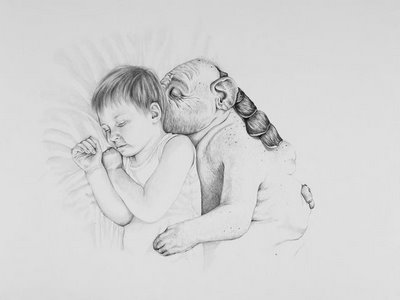
Speech Disorders
Speech disorders may be classified according to their causes or symptoms. The major causes are organic, imitative environmental, and psychogenic. Organic disorders may result from disease, impairment, or absence of the organs of speech. Imitative disorders occur when the child imitates defective speech. A speech disorder has a psychogenic origin when there is a psychological basis for its presence. A classification includes disorders of articulation, rhythm, voice, and symbolization.
Disorders of articulation may be so severe that the resultant speech is unintelligible. Specific sounds or groups of sounds may be omitted, added, substituted, or distorted.
The following are some examples of this type of disorder: Lalling, rhotacism, lambdacism,etc., involving misarticulated R, L, T, and D sounds, may be caused by poor control of the tongue tip. In lisping, misarticulated sibilant sounds, particularly S and Z, are often substituted by the 'TH' sound.
Delayed speech, involving the absence of many consonants and poor intelligibility, is often caused by slow physical or psychological maturation. Dysarthria, generalized sound substitutions and distortions, is caused by lesions in the peripheral or central nervous system.
Disorders of rhythm are characterized by disruptions of the normal rate of speech. Two common disorders of rhythm are stuttering or stammering and cluttering.
Monday, August 28, 2006
Mirroring
Tuesday, August 22, 2006
Youth Culture and The Thirtysomethings
Youth Culture
What are young people like nowadays? What makes them tick? Are they the brats of today who simply refuse to grow up?
Rebels without a cause are definitely out and teenagers have long lost their status as outsiders. The clash of generations seems, at first sight, at least, to be no longer an important issue.
Becoming like your own parents doesn't seem like such a horrible nightmare any more, while rebellious urges similar to those of the mythologized generation of 1968 appear more and more like a historical curiosity. Heavy resistance is seen as pointless, because all the symbols of rebellious teenage behavior have been long deconstructed and absorbed by pop culture.
Youth culture today revolves around consumption and virtual, mediated worlds.If there are any remnants of protest left among the young people today, it is usually an "introverted private matter," which happens behind closed doors.
Youth culture today can also be seen as a system, which has paradoxically integrated change as its stabilizing factor. Fashion trends and new technologies, which are voraciously consumed by young people, simply feed into the needs of the capitalist market. Young people are always expected to serve a certain profile.
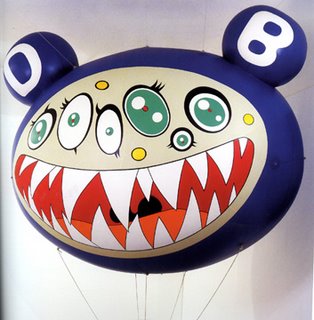
The post-adolescent thirtysomethings
The youth scene, which has been dominated since 1990s by electronic music, makes it quite obvious that the boundaries of so-called youth keep getting extended. It's not that hard to find 30-year-olds who are still dressing up young, living with roommates, and working as interns instead of pursuing steady jobs. You can also easily spot 40 year-olds clubbing all night long along with the new kids on the block. To grow up fully is becoming increasingly difficult. The sentence passed on popular culture today may read that "turning 30 is no longer cutting the invisible umbilical chord of our youth."
Although young people nowadays increasingly populate transitional spaces, such as vacation spots, airports or shopping malls, the "traditional" city takes up a central role in the exhibition as a stage on which various scenes, sounds and styles come into contact.
In today's urban space young people are attributed residual traces of consciousness, young people of today can be treated again as subjects and not merely consumers or regurgitators of cultural clichés.
article by: Soraia Vilela
What are young people like nowadays? What makes them tick? Are they the brats of today who simply refuse to grow up?
Rebels without a cause are definitely out and teenagers have long lost their status as outsiders. The clash of generations seems, at first sight, at least, to be no longer an important issue.
Becoming like your own parents doesn't seem like such a horrible nightmare any more, while rebellious urges similar to those of the mythologized generation of 1968 appear more and more like a historical curiosity. Heavy resistance is seen as pointless, because all the symbols of rebellious teenage behavior have been long deconstructed and absorbed by pop culture.
Youth culture today revolves around consumption and virtual, mediated worlds.If there are any remnants of protest left among the young people today, it is usually an "introverted private matter," which happens behind closed doors.
Youth culture today can also be seen as a system, which has paradoxically integrated change as its stabilizing factor. Fashion trends and new technologies, which are voraciously consumed by young people, simply feed into the needs of the capitalist market. Young people are always expected to serve a certain profile.

The post-adolescent thirtysomethings
The youth scene, which has been dominated since 1990s by electronic music, makes it quite obvious that the boundaries of so-called youth keep getting extended. It's not that hard to find 30-year-olds who are still dressing up young, living with roommates, and working as interns instead of pursuing steady jobs. You can also easily spot 40 year-olds clubbing all night long along with the new kids on the block. To grow up fully is becoming increasingly difficult. The sentence passed on popular culture today may read that "turning 30 is no longer cutting the invisible umbilical chord of our youth."
Although young people nowadays increasingly populate transitional spaces, such as vacation spots, airports or shopping malls, the "traditional" city takes up a central role in the exhibition as a stage on which various scenes, sounds and styles come into contact.
In today's urban space young people are attributed residual traces of consciousness, young people of today can be treated again as subjects and not merely consumers or regurgitators of cultural clichés.
article by: Soraia Vilela
Thursday, August 10, 2006
Wednesday, August 02, 2006
A Child In Your Dream
The Child
This is a very common dream symbol and an easily recognizable archetype -- we were all children at one time and can remember the freedom of being a child, the unconditional love we received from our parents, the spontaneous laughter, how we innocently accepted things as they were and let our imaginations run wild.
The Child archetype reminds us of how we were as children.
When children appear in your dreams, ask yourself: "Have I forgotten how to laugh and enjoy life? Am I need of unconditional love (perhaps from myself)? Have I forgotten how to dream? When was the last time I played a game?"
Often The Child archetype is speaking for the "inner child" -- the part of you that never grew up and is in need of love, comfort and reassurance. Have you embraced or spoken to your inner child recently? It can go a long way towards healing and wholeness.
You may recognize several variations of The Child archetype, among others:
The Divine Child, The Wounded Child, and The Abandoned Child
The Divine Child archetype is often seen in myths. The most easily recognizable Divine Child is the symbol of the Christ Child. In your dreams, The Divine Child is your true spiritual self, capable of great transformations and could symbolize your spiritual growth.
The Abandoned (Orphaned) Child archetype can easily be seen in Dorothy in the Wizard of Oz or Oliver in Oliver Twist. If you lost a caregiver in your early life, the Abandoned Child may show up in your dreams.
The Wounded Child archetype is seen as fragile and shy and will most likely appear if you've been abused or neglected as a child. Even if you had a wonderful, loving childhood, the Wounded Child can appear when you are experiencing something in real life that reminds you of a time when friends laughed at you or Mom unfairly chastised you as a child.
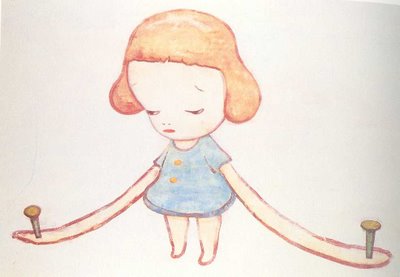
This is a very common dream symbol and an easily recognizable archetype -- we were all children at one time and can remember the freedom of being a child, the unconditional love we received from our parents, the spontaneous laughter, how we innocently accepted things as they were and let our imaginations run wild.
The Child archetype reminds us of how we were as children.
When children appear in your dreams, ask yourself: "Have I forgotten how to laugh and enjoy life? Am I need of unconditional love (perhaps from myself)? Have I forgotten how to dream? When was the last time I played a game?"
Often The Child archetype is speaking for the "inner child" -- the part of you that never grew up and is in need of love, comfort and reassurance. Have you embraced or spoken to your inner child recently? It can go a long way towards healing and wholeness.
You may recognize several variations of The Child archetype, among others:
The Divine Child, The Wounded Child, and The Abandoned Child
The Divine Child archetype is often seen in myths. The most easily recognizable Divine Child is the symbol of the Christ Child. In your dreams, The Divine Child is your true spiritual self, capable of great transformations and could symbolize your spiritual growth.
The Abandoned (Orphaned) Child archetype can easily be seen in Dorothy in the Wizard of Oz or Oliver in Oliver Twist. If you lost a caregiver in your early life, the Abandoned Child may show up in your dreams.
The Wounded Child archetype is seen as fragile and shy and will most likely appear if you've been abused or neglected as a child. Even if you had a wonderful, loving childhood, the Wounded Child can appear when you are experiencing something in real life that reminds you of a time when friends laughed at you or Mom unfairly chastised you as a child.

Tuesday, August 01, 2006
which child are you?
The Child
The mature personality of the Child archetype nurtures that part of us that yearns to be lighthearted and innocent, expecting the wonders of tomorrow, regardless of age. This part of our nature contributes greatly to our ability to sense playfulness in our lives, balancing the seriousness of adult responsibilities. The balanced Child is a delight to be around because the energy that flows from this part of our personality is positively infectious and brings out the best in others, as well as in us.
The Child also establishes our perceptions of life, safety, nurture, loyalty, and family. Its many aspects include the Wounded Child, Abandoned or Orphan Child, Dependent, Innocent, Nature, and Divine Child. These energies may emerge in response to different situations in which you find yourself, yet the core issue of all the Child archetypes is dependency vs. responsibility: when to take responsibility, when to have a healthy dependency, when to stand up to the group, and when to embrace communal life. Each of the variants of the Child archetype is characterized by certain tendencies, including shadow tendencies.
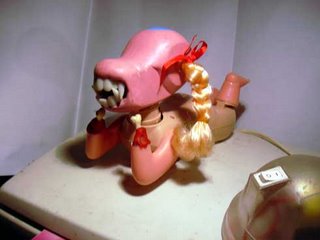
Wounded Child
The Wounded Child archetype holds the memories of abuse, neglect, and other traumas that we have endured during childhood. This is the Child pattern most people relate to, particularly since it has become the focus of therapy since the 1960s. Many people blame the relationship with their parents that created their Wounded Child, for instance, for all their subsequent dysfunctional relationships. On the positive side, the painful experiences of the Wounded Child often awaken a deep sense of compassion and a desire to help other Wounded Children. From a spiritual perspective, a wounded childhood cracks open the learning path of forgiveness.
The shadow aspect may manifest as an abiding sense of self-pity, a tendency to blame our parents for any current shortcomings and to resist moving on through forgiveness. It may also lead us to seek out parental figures in all difficult situations rather than relying on our own resourcefulness.
Orphan Child
From Little Orphan Annie to Cinderella, the Orphan Child in most well known children's stories reflects the lives of people who feel from birth as if they are not a part of their family, including the family psyche or tribal spirit. But because orphans are not allowed into the family circle, they have to develop independence early on. The absence of family influences, attitudes, and traditions inspires or compels the Orphan Child to construct an inner reality based on personal judgment and experience.
The shadow aspect manifests when Orphans never recover from feelings of abandonment, and the scar tissue from family rejection stifles their maturation, often causing them to seek surrogate family structures to experience tribal union. Therapeutic support groups become shadow tribes or families for an Orphan Child who knows deep down that healing these wounds requires moving on to adulthood. For that reason, establishing mature relationships remains a challenge.
Magical/Innocent Child
The Magical Child sees the potential for sacred beauty in all things, and embodies qualities of wisdom and courage in the face of difficult circumstances. One example is Anne Frank, who wrote in her diary that in spite of all the horror surrounding her family while hiding from Nazis in an attic, she still believed that humanity was basically good. This archetype is also gifted with the power of imagination and the belief that everything is possible.
The shadow energy of the Magical Child manifests as the absence of the possibility of miracles and of the transformation of evil to good. Attitudes of pessimism and depression, particularly when exploring dreams, often emerge from an injured Magical Child whose dreams were "once upon a time" thought foolish by cynical adults. The shadow may also manifest as a belief that energy and action are not required, allowing one to retreat into fantasy.
Nature Child
This archetype inspires deep, intimate bonding with natural forces, and has a particular affinity for friendships with animals. Although the Nature Child has tender, emotional qualities, it can also have an inner toughness and ability to survive--the resilience of Nature herself. Nature Children can develop advanced skills of communicating with animals, and in stories reflecting this archetype an animal often comes to the rescue of its child companion. Many veterinarians and animal rights activists resonate with this archetype because they have felt a conscious rapport with animals since childhood. Other adults describe being in communication with nature spirits and learning to work in harmony with them in maintaining the order of nature.
The shadow aspect of the Nature Child manifests in a tendency to abuse animals and people and the environment.
A love of animals is not sufficient to qualify for this archetype, however. A life-long pattern of relating to animals in an intimate and caring way, to the extent that your psyche and spirit need these bonds as a crucial part of your own well-being, is your best clue.
The mature personality of the Child archetype nurtures that part of us that yearns to be lighthearted and innocent, expecting the wonders of tomorrow, regardless of age. This part of our nature contributes greatly to our ability to sense playfulness in our lives, balancing the seriousness of adult responsibilities. The balanced Child is a delight to be around because the energy that flows from this part of our personality is positively infectious and brings out the best in others, as well as in us.
The Child also establishes our perceptions of life, safety, nurture, loyalty, and family. Its many aspects include the Wounded Child, Abandoned or Orphan Child, Dependent, Innocent, Nature, and Divine Child. These energies may emerge in response to different situations in which you find yourself, yet the core issue of all the Child archetypes is dependency vs. responsibility: when to take responsibility, when to have a healthy dependency, when to stand up to the group, and when to embrace communal life. Each of the variants of the Child archetype is characterized by certain tendencies, including shadow tendencies.

Wounded Child
The Wounded Child archetype holds the memories of abuse, neglect, and other traumas that we have endured during childhood. This is the Child pattern most people relate to, particularly since it has become the focus of therapy since the 1960s. Many people blame the relationship with their parents that created their Wounded Child, for instance, for all their subsequent dysfunctional relationships. On the positive side, the painful experiences of the Wounded Child often awaken a deep sense of compassion and a desire to help other Wounded Children. From a spiritual perspective, a wounded childhood cracks open the learning path of forgiveness.
The shadow aspect may manifest as an abiding sense of self-pity, a tendency to blame our parents for any current shortcomings and to resist moving on through forgiveness. It may also lead us to seek out parental figures in all difficult situations rather than relying on our own resourcefulness.
Orphan Child
From Little Orphan Annie to Cinderella, the Orphan Child in most well known children's stories reflects the lives of people who feel from birth as if they are not a part of their family, including the family psyche or tribal spirit. But because orphans are not allowed into the family circle, they have to develop independence early on. The absence of family influences, attitudes, and traditions inspires or compels the Orphan Child to construct an inner reality based on personal judgment and experience.
The shadow aspect manifests when Orphans never recover from feelings of abandonment, and the scar tissue from family rejection stifles their maturation, often causing them to seek surrogate family structures to experience tribal union. Therapeutic support groups become shadow tribes or families for an Orphan Child who knows deep down that healing these wounds requires moving on to adulthood. For that reason, establishing mature relationships remains a challenge.
Magical/Innocent Child
The Magical Child sees the potential for sacred beauty in all things, and embodies qualities of wisdom and courage in the face of difficult circumstances. One example is Anne Frank, who wrote in her diary that in spite of all the horror surrounding her family while hiding from Nazis in an attic, she still believed that humanity was basically good. This archetype is also gifted with the power of imagination and the belief that everything is possible.
The shadow energy of the Magical Child manifests as the absence of the possibility of miracles and of the transformation of evil to good. Attitudes of pessimism and depression, particularly when exploring dreams, often emerge from an injured Magical Child whose dreams were "once upon a time" thought foolish by cynical adults. The shadow may also manifest as a belief that energy and action are not required, allowing one to retreat into fantasy.
Nature Child
This archetype inspires deep, intimate bonding with natural forces, and has a particular affinity for friendships with animals. Although the Nature Child has tender, emotional qualities, it can also have an inner toughness and ability to survive--the resilience of Nature herself. Nature Children can develop advanced skills of communicating with animals, and in stories reflecting this archetype an animal often comes to the rescue of its child companion. Many veterinarians and animal rights activists resonate with this archetype because they have felt a conscious rapport with animals since childhood. Other adults describe being in communication with nature spirits and learning to work in harmony with them in maintaining the order of nature.
The shadow aspect of the Nature Child manifests in a tendency to abuse animals and people and the environment.
A love of animals is not sufficient to qualify for this archetype, however. A life-long pattern of relating to animals in an intimate and caring way, to the extent that your psyche and spirit need these bonds as a crucial part of your own well-being, is your best clue.
Wednesday, July 26, 2006
Να εξετάσουμε την αθωότητα στην ανυποψίαστη παιδική ηλικία, την διαδικασία ωρίμανσης, την διαμόρφωση του ανθρώπινου ψυχισμού, το πέρασμα μέσα απο την εφηβεία στην ωρίμανση και στον κόσμο των ενηλίκων.
Παιδικοί έρωτες αλλά και εφηβική εγκληματικότητα, εμμονές, ιδεοληψίες αλλά και επαναστατικότητα, ημερολόγια με τρυφερά ποιήματα αλλά και runaways, αποκάλυψη της σεξουαλικότητας αλλά και απόπειρες αυτοκτονίας.
Εικόνες και αναφορές για την παιδικότητα που υπάρχει στην ψυχισμό κάθε ενήλικα και στην εφηβεία που ίσως διαρκεί αιώνια. Ενα κρυφό πέρασμα αναμεσα στον κόσμο των παιδιών και τον κόσμο των ενηλίκων.
Παραμύθια, παχνίδια, περιέργεια, πρώτος έρωτας, μυθοποιημένα είδωλα, επαναστάσεις.
Μια ρευστή συναισθηματική κατάσταση
Παιδικοί έρωτες αλλά και εφηβική εγκληματικότητα, εμμονές, ιδεοληψίες αλλά και επαναστατικότητα, ημερολόγια με τρυφερά ποιήματα αλλά και runaways, αποκάλυψη της σεξουαλικότητας αλλά και απόπειρες αυτοκτονίας.
Εικόνες και αναφορές για την παιδικότητα που υπάρχει στην ψυχισμό κάθε ενήλικα και στην εφηβεία που ίσως διαρκεί αιώνια. Ενα κρυφό πέρασμα αναμεσα στον κόσμο των παιδιών και τον κόσμο των ενηλίκων.
Παραμύθια, παχνίδια, περιέργεια, πρώτος έρωτας, μυθοποιημένα είδωλα, επαναστάσεις.
Μια ρευστή συναισθηματική κατάσταση
Friday, July 21, 2006
In the Realms of the Unreal
About Henry Darger
Henry Darger's landlords, the Lerners, discovered paintings in his apartment: hundreds of brilliant watercolors, some over 3m. long. The images were disturbing and mysteriously beautiful; little girls frolicking under stormy skies, little girls fighting soldiers, little girls being rescued by fantastic winged creatures.
The landlords soon found the other half of Darger’s life’s work, perhaps the longest novel ever written: the more than 15,000 page, single-spaced typed: In the Realms of the Unreal. An epic story of the virtuous Vivian girls and their religious war against the evil Glandelinian army.
His work contains many religious themes, albeit handled extremely idiosyncratically. Darger's human figures were rendered largely by tracing, collage, or photo-enlargement from popular magazines and children's books. Some of his favorite figures were the Coppertone Girl and Little Annie Rooney. The images of daring escapes, mighty battles and painful torture are reminiscent of events in Catholic history; the text makes it clear that the child victims are heroic martyrs like the early saints. One idiosyncratic feature of his artwork is an peculiar transgenderism: characters are often portrayed unclothed or partially clothed, and regardless of ostensible gender, some females have male sex organs. Some feel Darger was unfamiliar with female anatomy, that he meant it as a symbol of power or that he modeled the girls after images of the infant Jesus.
Much of the fascination with Darger concerns his portrayal of horrific brutality against children. For some reason, it is often assumed that Darger wrote and drew this way because he was enacting repressed subconscious desires. A biographer -MacGregor- claims without evidence, that Darger may have killed a girl (Paroubek), and that even if he haven't committed a crime, he "had the mind of a serial killer". It is just as likely that Darger, an abused child who had also witnessed the abuse of others, sought to reveal a truth which polite society did not wish to acknowledge.
Darger wrote also The History of My Life, a book that spends 206 pages detailing his early life before veering off into 4,672 pages of fiction about a huge twister called "Sweetie Pie," probably based on his experience at Countrybrown. He also kept a diary to chronicle the weather and his daily activities.
The sequel to Vivian Girls is called Crazy House: Further Adventures in Chicago. Begun in 1939, it is a Stephen King-like tale of a house which is possessed by demons, haunted by ghosts, or perhaps has an evil consciousness of its own, like the hotel in The Shining. Children disappear into the house and are later found brutally murdered. The Vivians and a male friend are sent to investigate and discover that the murders are the work of evil ghosts. The girls go about exorcising each room until the house is clean.
The Story of the Vivian Girls
or a 15,143-page fantasy manuscript called "The Story of the Vivian Girls, in What is known as the Realms of the Unreal, of the Glandeco-Angelinnian War Storm, Caused by the Child Slave Rebellion"
The Story of the Vivian Girls postulates a large planet around which Earth orbits as a moon and where most people are Christian. The majority of the story concerns the adventures of the daughters of Robert Vivian, seven sisters who are princesses of the Christian nation of Abbiennia, who assist a daring rebellion against a regime of child slavery imposed by the "Glandelinians". The latter resemble Confederate soldiers from the American Civil War. The children take up arms in their own defense and are often slain in battle, or after vicious torture by the Glandelinian overlords. The elaborate mythology also includes a species called the "Blengigomeneans" (Blengins), winged beings with curved horns, who are usually benevolent toward the Vivian Girls.
Through their sufferings, the Vivian Girls are to be able to bring about a triumph of Christianity. Darger provided two endings to the story: in one, the Vivian Girls and Christianity are triumphant; in the other, they are defeated and the godless Glandelinians reign.
http://www.acer-access.com/~darger@acer-access.com
http://dir.salon.com/story/books/review/2002/07/23/darger/index.html
http://dir.salon.com/story/books/review/2002/07/23/darger/index.html
Friday, July 07, 2006
Subscribe to:
Posts (Atom)







